ERC – Förderungen
Mit den Förderungen des Europäischen Forschungsrates (engl. European Research Council, ERC) werden exzellente Wissenschaftler*innen aller Disziplinen themenoffen in ihren wegweisenden Forschungsprojekten unterstützt. Für ihre bahnbrechenden Projektideen können einzelne Forscher*innen in verschiedenen Förderlinien (Starting, Consolidator oder Advanced Grant) eine Förderung einwerben, die bis zu fünf Jahre läuft.

Bild: Olivier26/depositphotos
ERC Consolidator Grant – StrangeScatt
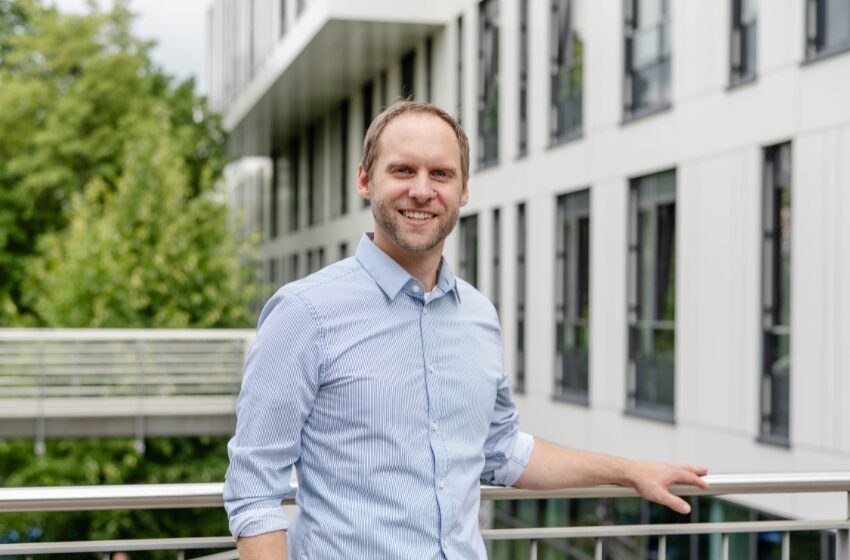
Preisträger: Prof. Dr. John Bulava
(Foto: RUB, Marquard)
Neutronensterne zählen zu den dichtesten Objekten des Universums. Die Vorgänge in ihrem Inneren geben der Teilchenphysik Rätsel auf. Beobachtungen und Theorie passen nicht zueinander. Schuld daran könnte ein mangelndes Verständnis der sogenannten Hyperonen sein – Teilchen, die einen besonderen Bestandteil, das Strange-Quark, besitzen. Sie sind instabil und daher schwer zu untersuchen. Prof. Dr. John Bulava von der Ruhr-Universität Bochum will ihnen mithilfe von Computersimulationen auf die Schliche kommen. Der Europäische Forschungsrat ERC fördert seine Arbeiten im Rahmen eines Consolidator Grants mit knapp zwei Millionen Euro für fünf Jahre. Das Projekt „Strange Nuclear Matter from First-Principles Hadron Scattering Amplitudes“, kurz StrangeScatt, soll im Juni 2024 starten.
ERC Consolidator Grant – Dark100
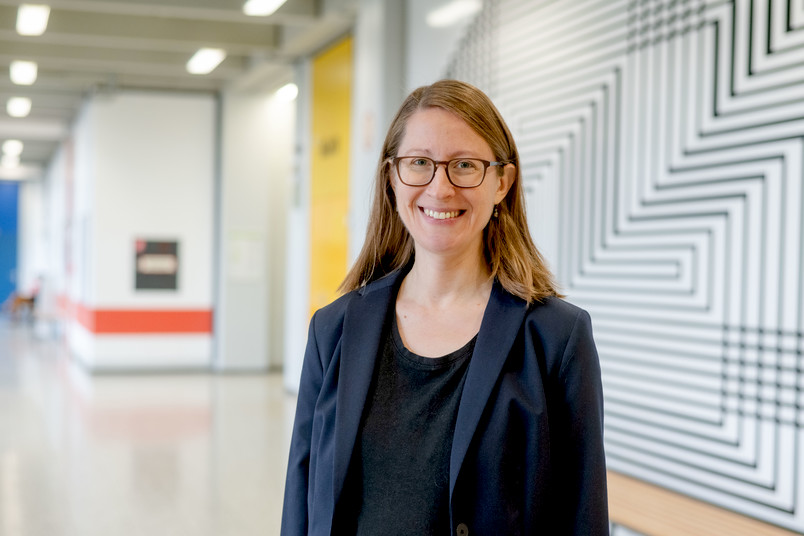
Preisträgerin: Dr. Elisa Pueschel
(Foto: RUB, Marquard)
Der größte Teil der Materie im Universum ist Dunkle Materie. Darauf richtet Dr. Elisa Pueschel vom Astronomischen Institut der Ruhr-Universität Bochum ihr Augenmerk in ihrem Projekt „Dark100“: Im Mittelpunkt steht ein noch unerforschter Massebereich Dunkler Materieteilchen.
Durch den Einsatz neuartiger, kosteneffizienter Teleskoptechnologie wird Dark100 eine Reihe von Teleskopen einsetzen, die in der Lage sind, die Auslöschung Dunkler Materie zu untersuchen und die Empfindlichkeit der derzeit betriebenen und geplanten Gammastrahlen-Instrumente um eine Größenordnung zu verbessern, und zwar mit einer noch nie dagewesenen Energie- und Winkelauflösung.
Angetrieben von den jüngsten theoretischen Entwicklungen wird Elisa Pueschel nach Teilchen der Dunklen Materie zwischen 100 Teraelektronenvolt und einigen zehn Petaelektronenvolt suchen. Im Projekt Dark100 wird sie so einen einzigartigen Datensatz von tiefgehenden Gammastrahlenbeobachtungen von astrophysikalischen Systemen mit Dunkler Materie aufbauen. Entweder werden die Forschenden Dunkle Materie nachweisen – oder falls nicht, werden sie Grenzwerte für ihren geschwindigkeitsgewichteten Annihilationsquerschnitt festlegen. Sollte sie nicht nachgewiesen werden, wird die Dunkle Materie für einen Teil des untersuchten Massenbereichs ausgeschlossen, und die theoretischen Modelle werden für den gesamten untersuchten Massenbereich eingegrenzt.
Der Grant ist mit 2,3 Millionen Euro für fünf Jahre dotiert.
ERC Starting Grant – Supraleiter
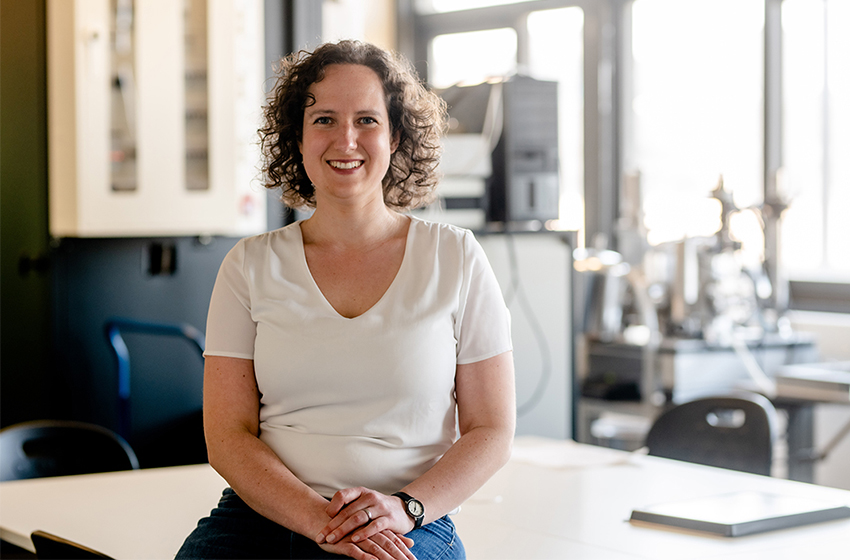
Preisträgerin: Prof. Dr. Anna Böhmer
(Foto: RUB, Marquard)
Im Rahmen eines ERC Starting Grants erforscht Anna Böhmer besondere Elektronenzustände in Supraleitern. Das kürzlich entdeckte Phänomen wirft viele Fragen auf.
In manchen Materialien nehmen Elektronen einen ungewöhnlichen Zustand ein, die sogenannte nematische Ordnung: Sie bewegen sich nicht gleichmäßig in alle Richtungen, sondern nehmen spontan eine Vorzugsorientierung ein. Dieses erst kürzlich entdeckte Verhalten haben Forschende mittlerweile in mehreren Supraleitern beschrieben, also in Materialien, die Strom verlustfrei leiten können. Bislang mangelt es jedoch an hochauflösenden Methoden, um solche nematischen Supraleiter erforschen zu können. Das möchte Prof. Dr. Anna Böhmer im Rahmen ihres Starting Grants ändern.
Sowohl Supraleitung als auch nematische Ordnung basieren auf besonderen Elektronenzuständen. In Supraleitern tun sich Elektronen zu speziellen Paaren zusammen, was dazu führt, dass der elektrische Widerstand vollständig verschwindet. Bei der nematischen Ordnung verlieren die Elektronen ihre Kugelsymmetrie und bevorzugen eine bestimmte Orientierung. Das Phänomen der Supraleitung ist seit 100 Jahren bekannt, aber trotzdem sind viele Aspekte immer noch rätselhaft. Noch rätselhafter ist für Forschende die Kombination aus Supraleitung und nematischer Ordnung: Warum treten nematische Ordnung und unkonventionelle Supraleitung oft zusammen auf? Gibt es einen gemeinsamen Mechanismus, der sowohl nematische Ordnung als auch Supraleitung hervorruft? Eine neue Methode soll helfen, diese Fragen zu erforschen.
Der Starting Grant ist mit 1,5 Millionen Euro dotiert. Das Projekt startet 2023.
ERC Consolidator Grant – COSMIC LITMUS
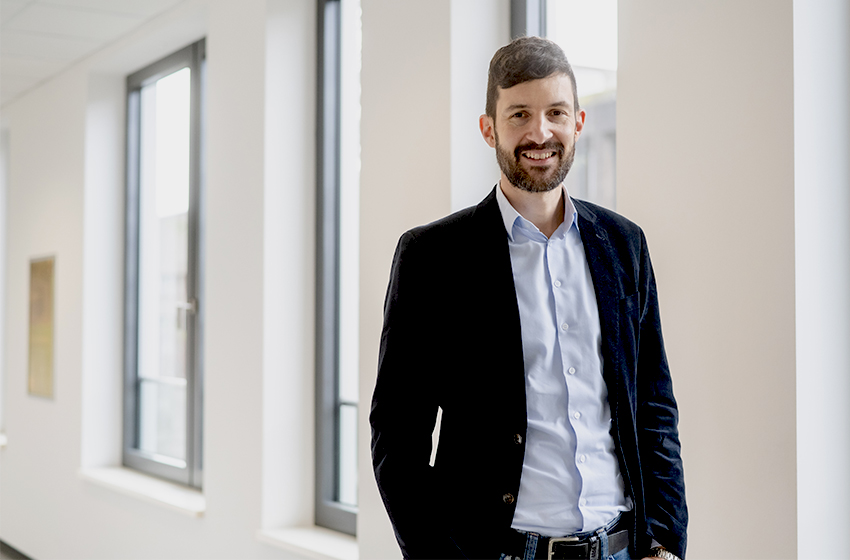
Preisträger: Prof. Dr. Hendrik Hildebrandt
(Foto: RUB, Marquard)
In den letzten Jahren haben Messungen des schwachen Gravitationslinseseffektes Diskrepanzen in kosmologischen Parametern, deren Unsicherheiten zuvor von der Planck Cosmic Microwave Background (CMB) Mission stark eingeschränkt wurden, aufgedeckt.
Mit diesem ERC Consolidator Grant wird Prof. Dr. Hendrik Hildebrandt sich der essentiellen Aufgabe der Kalibration photometrischer Rotverschiebungen widmen. Die ordnungsgemäße Bestimmung dieses Parameters ist von essentieller Bedeutung für aktuelle Gravitationslinsenstudien wie auch für den Erfolg zukünftiger Missionen, wie etwa der Auswertung der Daten des von NASA und ESA geplanten Euclid-Teleskops. Die erfolgreiche Kalibration photometrischer Rotverschiebungen wird die Aussagekraft der „kosmischen Verscherung“ (cosmic shear) für die Kosmologie signifikant verbessern und weiterhin Unsicherheiten kleiner als die, die CMB-Messungen heutzutage liefern können, für den Klumpungsfaktor dunkler Materie zum Ergebnis haben.
Letztlich wird diese Arbeit einen Meilenstein in der Geschichte der Kosmologie darstellen – entweder durch die Aufhebung der zuvor genannten Diskrepanzen, oder durch das Aufzeigen der Notwendigkeit eines völlig neuen kosmologischen Modells.
ERC Advanced Grant – Erforschung der Starken Wechselwirkung
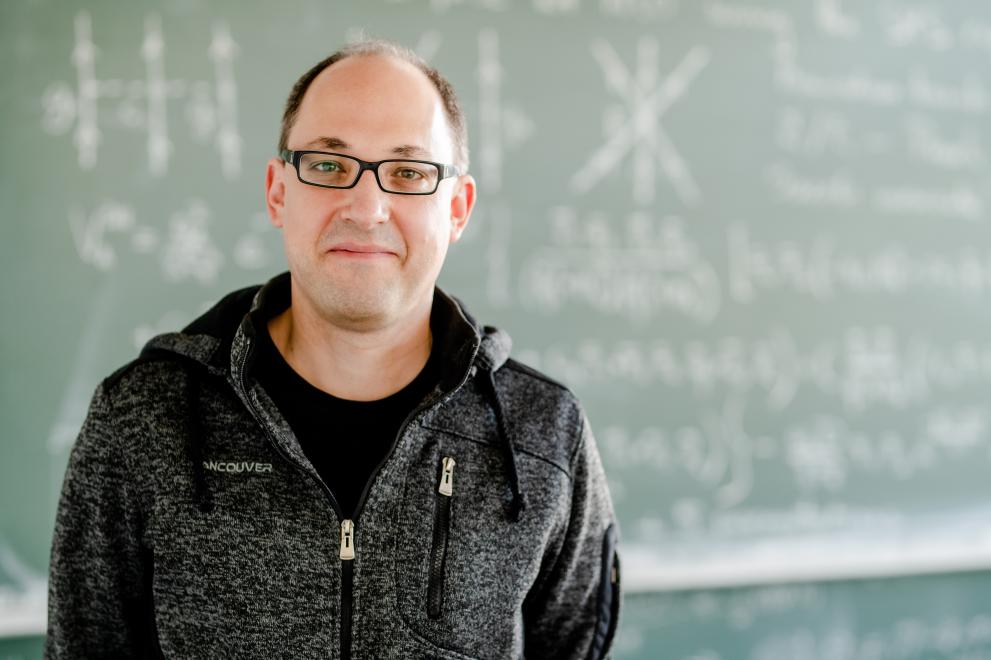
Preisträger Prof. Dr. Evgeny Epelbaum
(Foto: RUB, Marquard)
Das Verständnis der Entstehung und der Eigenschaften von komplexen Strukturen wie Atomkernen aus der Quantenchromodynamik (QCD), d.h. der zugrundeliegenden Theorie der starken Wechselwirkung, ist nach wie vor eine große Herausforderung der heutigen Physik. Sie ist auch relevant für fundamentale Fragen, wie den Ursprung der Elemente, die Grenzen der Kernstabilität, die Suche nach Physik jenseits des Standardmodells und die Physik der Neutronensterne. Die Beantwortung dieser Schlüsselfragen erfordert ein detailliertes Verständnis der Wechselwirkungen zwischen den Nukleonen.
Es ist gut etabliert, dass die Kernkräfte von paarweisen Wechselwirkungen dominiert sind, die relativ gut verstanden sind. Dies erlaubt es die Eigenschaften des einfachsten Kernsystems, welches nur aus zwei Nukleonen besteht, in Übereinstimmung mit experimentellen Daten zu berechnen. Für schwerere Systeme muss man jedoch komplexere Wechselwirkungen zwischen drei (und mehr) Nukleonen berücksichtigen. Solche Dreikörperkräfte sind dagegen noch nicht gut verstanden und stellen ein Bottleneck für ab-initio Beschreibungen von Atomkernen dar. Tatsächlich bestehen selbst im Drei-Nukleonen-System noch große Diskrepanzen zwischen Theorie und Experiment.
Dieses ERC-Projekt zielt darauf ab, die mit den Drei-Nukleonen-Kräften zusammenhängende Herausforderung mittels eines theoretischen Zugangs zu lösen, der als effektive Feldtheorie (EFT) bekannt ist. Dieser systematisch verbesserungsfähige Ansatz beruht auf Symmetrien und findet eine breite Anwendung in der Teilchenphysik. Kürzlich ist es uns gelungen, die zwischen zwei Nukleonen wirkenden Kräfte mit diesem Formalismus sehr präzise zu beschreiben. Im Rahmen des ERC-Projekts werden wir nun die EFT zur Herleitung der entsprechenden Dreikörperkräfte anwenden und die verfügbaren experimentellen Daten für Nukleon-Deuteron Streuung analysieren. Dies wird neue Erkenntnisse über die seit langem bestehenden Rätsel im Drei-Nukleonen-System liefern (d.h. Theoriedefizite vs. inkonsistente experimentelle Daten) und ggf. dedizierte Experimente anleiten, um verbleibende Diskrepanzen aufzulösen. Des Weiteren werden wir groß angelegte ab-initio Studien von komplexeren Systemen durchführen, um die Beziehungen zwischen den Kernkräften und ihren Eigenschaften zu erforschen. Solche ab-initio Simulationen können Einblicke in Bereiche liefern, die der experimentellen Forschung nicht zugänglich sind. Zum Beispiel ist es möglich zu erforschen, wie die Eigenschaften von Atomkernen oder Prozesse in den Sternen von Naturkonstanten – wie den Quark-Massen abhängen.
Zusammenfassend werden die geplanten Studien einen wichtigen Beitrag zur Etablierung eines rigorosen, völlig mikroskopischen und vorhersagekräftigen theoretischen Zugangs zu Kernstruktur und -Reaktionen liefern, der auf den Symmetrien der QCD beruht.

